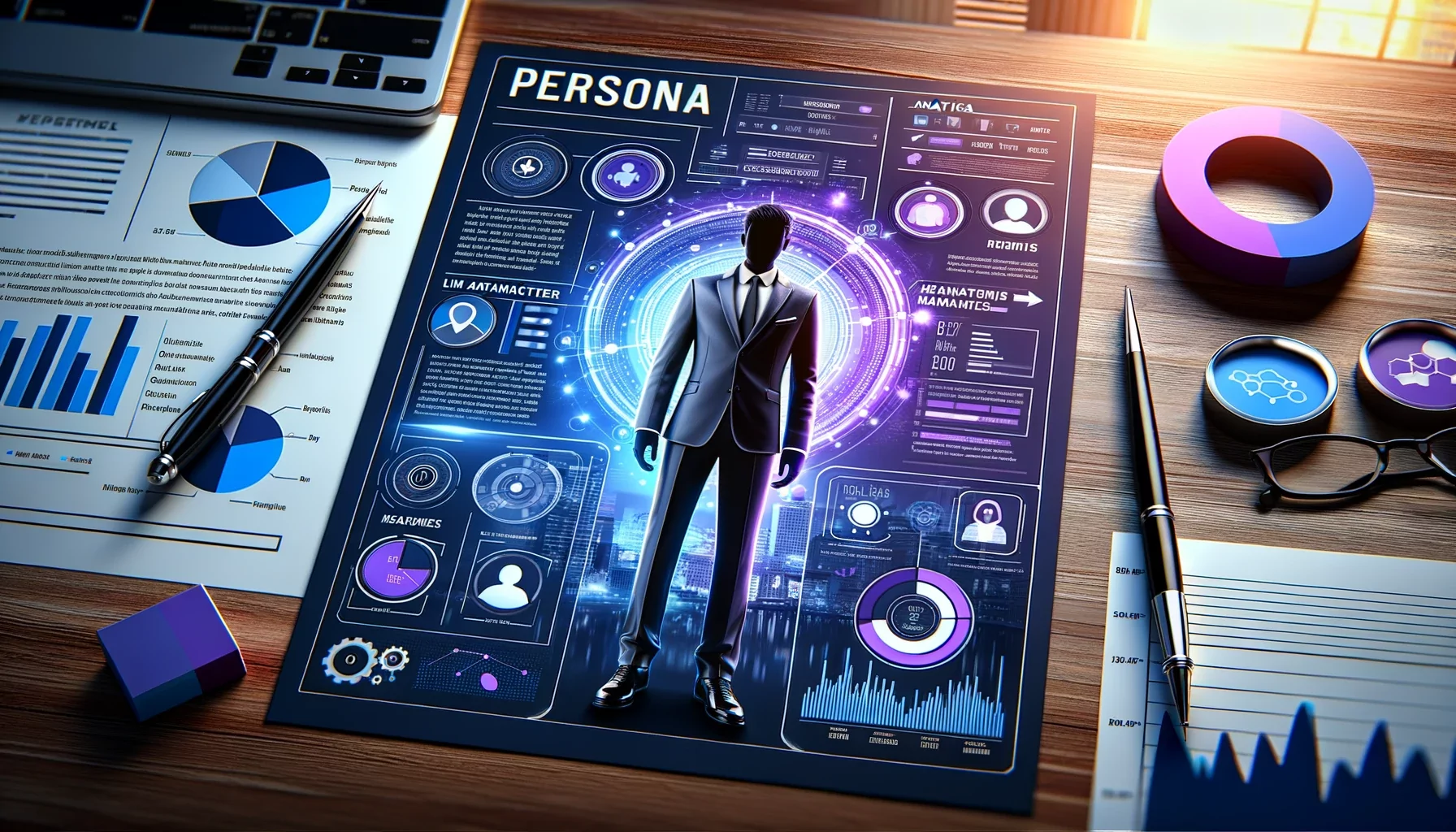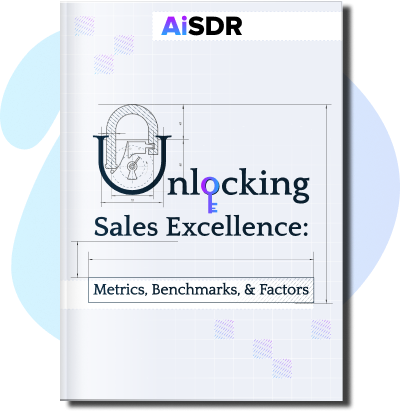What is a Sales Persona?

Find out the good and the bad of creating a sales persona for your business that you’ll actually use.
84% of sales reps missed their quota in 2023.
In other words, just 16% of your team is hitting quota.
Finding talent for your sales team is no easy task, but you can leverage the next best thing – sales personas.
What is a persona?
Generally speaking, personas are a fictional representation of some person or group.
Some examples of personas include:
- Sales personas
- Customer personas
- Buyer personas
- Marketing personas
- User personas
- Proto personas
Each of these personas fills a different purpose, whether it’s modeling your target customers, users, or even a potential persona (in the case of proto personas).
You can then leverage the personas at your disposal for content creation, outreach strategies, and product design and development.
However, good personas will take some amount of time and effort since you’ll need to research the market, your competitors, and even possible buyers or users. Personas built without data are essentially a collection of unverified assumptions, and basing your entire go-to-market strategy on it is a recipe for disaster.
Note: Personas are very similar to ideal customer profiles (ICP), which can easily lead to confusion. The difference is the subject being modeled. A persona models a person or group while an ICP models a company or organization.
What is a sales persona?
Sales personas (sometimes referred to as seller personas) replicate the role of a person on your sales team.
For most businesses, this is one of the following positions:
- Sales Development Representative
- Business Development Representative
- Sales Representative
- Account Executive
- Chief Sales Officer
- Head of Sales
- Founder
Depending on your situation, audience, or outreach goal, you might even create a sales persona that replicates your CEO or CTO.
Sales personas are frequently used interchangeably with buyer and customer personas, but they have different purposes even if they share information.
Sales personas model the people who sell your product and buyer personas model the people who purchase your product.
Why is a sales persona important?
Sales personas are like a cheatsheet or playbook, depending on how fully you develop them.
You can structure them as guidelines about how to speak with leads and write content, as well as a reference with information about the company, the product, and even key sales enablement material.
Since the launch of ChatGPT and other alternatives, sales personas have unlocked another use case.
Specifically, you can use sales personas to configure AI sales software like AiSDR.
It may take a bit of time, effort, and some debugging, but sales personas can be restructured into an input for generative AI.
What information goes into a sales persona?
Sales personas should cover information that you’d normally give to any human who joins your sales team. This includes details about:
Your outreach goal
There are many possible outreach goals, such as getting a meeting booked, scheduling a discovery call, or scoring a positive response.
Accordingly, the language and approach used in sales emails and their replies will change based on the goal.
Your company
Every person working for your company should know something about like its industry and products.
Sales personas should contain the basics so that way (a) human SDRs can quickly reference it if they forget and (b) the AI knows how to answer.
Target customers
For best results, sales personas should focus on one customer segment per persona.
You should try to be as specific as possible, stating the position, industry, and company size.
For example, if your product targets sales teams, you might create one persona for sales decision-makers (e.g. head of sales, chief sales officer) and one for non-managerial team members (SDRs, BDRs, AEs).
Customer challenges and pain points
As a rule of thumb, you should add approximately 8 distinct pain points.
The majority (5-6) should be tailored to the target customer while the remaining 2-3 can be more generalized.
You should also avoid falling into the trap of writing 2+ pains as if it were one pain, otherwise it will throw off the results of both humans and AI.
Using AiSDR as an example, this is what pain points may look like.
| Pain points | |
| Pain #1 | SDRs are unable to respond to high-intent inbound leads in <10 minutes, which leads to a significant drop in conversion rates. |
| Pain #2 | Many SDRs are unable to meet their monthly sales quota, which leads to high SDR costs with a low conversion rate. |
Solutions to customer pains
Naturally, if you highlight 8 pain points, you should map out 8 different ways your product, service, or company solves those pains (i.e. 1 solution per 1 pain).
Once again using AiSDR as an example, this is what your pain-solution mapping may look like.
| Pain points | Solutions | |
| Pain #1 | SDRs are unable to respond to high-intent inbound leads in <10 minutes, which leads to a significant drop in conversion rates. | AiSDR is guaranteed to provide a personalized follow-up for each inbound lead in less than 10 minutes. |
| Pain #2 | Many SDRs are unable to meet their monthly sales quota, which leads to high SDR costs for a low conversion rate. | AiSDR is 10% of a full-time SDR’s cost, which automatically reduces the SDR cost per conversion rate to better levels. |
Depending on your pricing model, you might specify which tier or plan is ideal for which type of customer, such as large plans for enterprises or pay-as-you-go options for start-ups.
Competitors and how you’re different
Depending on your product or service, you can specify your competitors or products your target buyer currently users.
This is also where you indicate what makes your product or service unique, such as special features, unique selling points, and any perks.
In AiSDR’s case, it helps customers consolidate different sales tools under one subscription, like email warm-up, automated sending, and lead discovery.
Social proof
Sales personas should be capable of referring to case studies, customer stories, and other testimonials if asked.
Here’s an example.
| “Okay” story | “Great” story |
| A tech company we worked with enjoyed better growth and profits by using us. | [Company name] felt like their growth had stalled. After switching to AiSDR, [company name] enjoyed 20% faster growth and a 30% boost in annual profit by using our product to optimize their SDR costs. |
Alternatively, you can draw attention to any awards and industry achievements you’ve won, or if you have a cool pedigree like an Ivy League degree or backing from Y Combinator.
Pro tip: The more numbers your case studies have, the better.
Common objections and how to address them
The easiest way to create a list of common objections is to compile any frequently asked questions or typical comments you hear during any demos or presentations. Objections may take the form of a question or sentence.
Similar to customer pains and solutions, you’ll want to map out objections and how to handle them.
Here are some examples.
| Objection | Response |
| I want to edit the emails that AI creates. | At the moment, this is not possible. Currently, AiSDR only allows the automatic creation and sending of emails. In the near future, AiSDR will introduce a feature that allows users to set a confidence level that must be met in order for an email to be sent. Any emails that fail the confidence check will be sent for review, editing, and approval. |
| How many emails can I send per month? | A standard monthly subscription to AiSDR covers 1,000 emails or 10 meetings booked. |
For best results, you should write objections as you hear them – if it’s a question, add the objection as a question, and if it’s a statement, add the objection as a statement.
Stylistics
And for the cherry on top, you’ll want to include these final elements to ensure your sales persona actually behaves like a salesperson:
- Sales frameworks
- Sales tactics
- Sales email templates
- Communication style (tone, voice)
Armed with this information, you can set up an AI SDR or AI BDR to take over and run part of your email outreach, such as inbound, outbound, or lead prospecting.
Configuring sales personas for AI outreach
Before you get too far, you’ll need to include some extra information that you normally wouldn’t add to a sales playbook for your team if you want sales personas to power AI outreach.
Sales personas for AI also need demographic data about the person they’re replicating:
- Position (e.g. SDR, BDR)
- Name
- Gender
- Team (e.g. sales, marketing)
- Industry (e.g. IT, Finance)
Large enterprises can usually just create a name and gender for a fictional SDR.
But if you’re a small company or micro startup relying on founder-led sales strategies, or a larger company running a CEO-based outreach campaign, you’ll want to use the person’s real name and gender.
The more built out and realistic your sales persona, the more effective it will be for powering your outreach.
Drawbacks of sales personas
While sales personas are a useful tool for automating sales outreach, they still have some drawbacks:
- Overgeneralization – Especially if your personas are backed by sales, relying too heavily on sales personas can lead to oversimplified emails that won’t resonate. Flawed or inaccurate assumptions will also drag performance lower.
- Inflexibility – Strict adherence to sales personas can reduce adaptability, making it difficult for sales teams to pivot when engaging leads with unique or unexpected situations.
- Resource intensive – Sales personas can become out of date if something in the market happens, such as a recession that forces companies to tighten belts. When that happens, you need to update your personas, and depending on how many there are, it could be a lot of updating.
Benefits of sales personas
The best sales personas are a simplified, targeted version of your sales playbook.
But if you use them to power AI SDRs and AI sales emails, you unlock several key advantages:
- Cost efficiency – Full-time SDRs cost over $4,500 per month (before OTE). In comparison, AiSDR costs just $750 per month.
- Personalization at scale – Humans take 20-30 minutes to craft and send a highly personalized email. AiSDR takes less than a minute.
- Precise targeting – Sales personas are most effective when they’re limited to one customer segment. This forces you to think carefully and logically about the best ways to connect with leads from that segment.
- Niche situations – Events and holidays are good times to run promotions and discounts. You can use a sales personas to configure how AI will write your Halloween emails, Thanksgiving outreach, and Christmas messages.
- Greater consistency – Sales personas tell AI what to write and how, and since AI will never have a bad day, work while ill, or catch writer’s block, your email quality will never drop.
- Zero time gaps – AI SDRs excel at covering gaps in your company’s off-hours, such as weekends, holidays, difficult time zones, and graveyard shifts.
In the end, sales personas have the capacity to make your life much simpler, especially once you decide to start building out your sales team, either with real people or AI.











